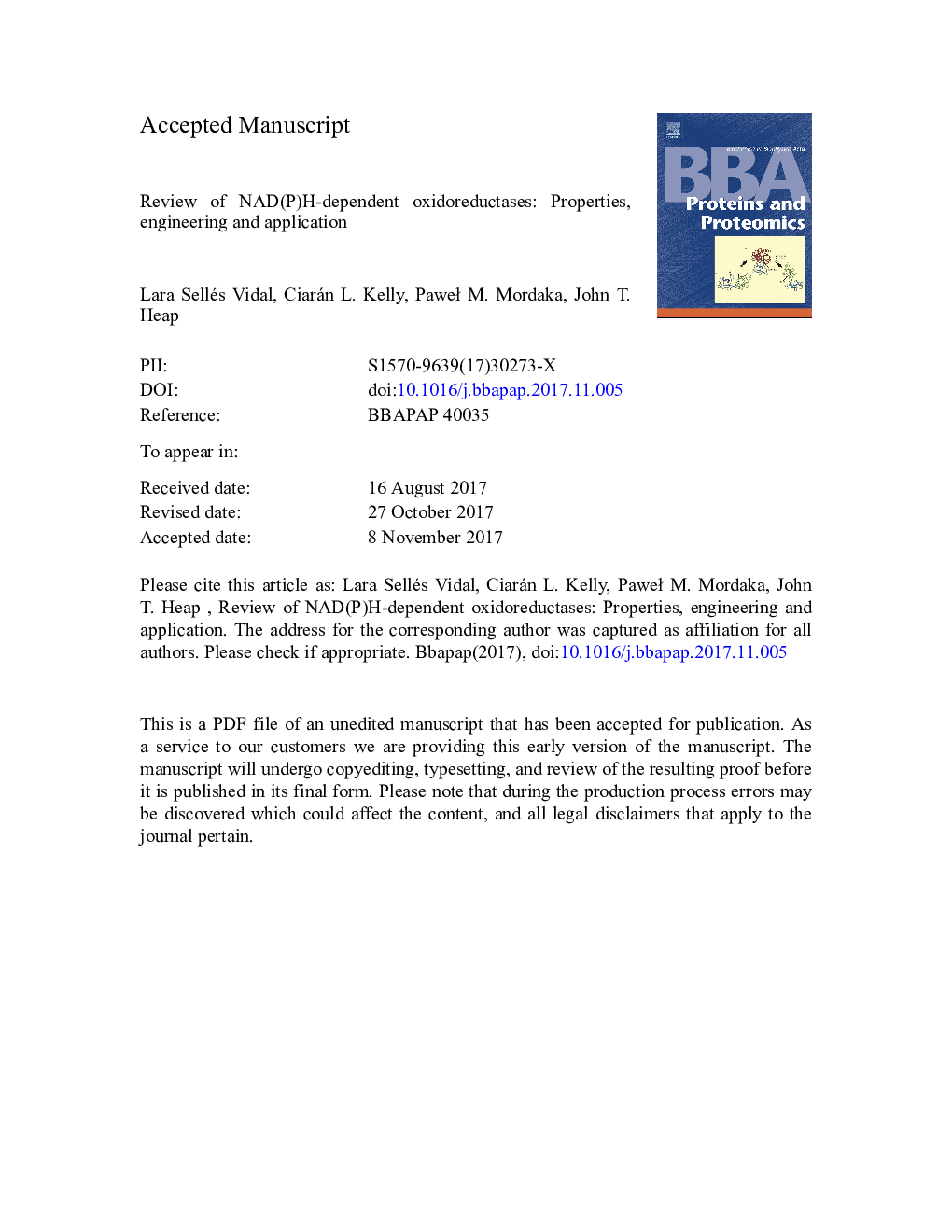| Article ID | Journal | Published Year | Pages | File Type |
|---|---|---|---|---|
| 7560443 | Biochimica et Biophysica Acta (BBA) - Proteins and Proteomics | 2018 | 49 Pages |
Abstract
NAD(P)H-dependent oxidoreductases catalyze the reduction or oxidation of a substrate coupled to the oxidation or reduction, respectively, of a nicotinamide adenine dinucleotide cofactor NAD(P)H or NAD(P)+. NAD(P)H-dependent oxidoreductases catalyze a large variety of reactions and play a pivotal role in many central metabolic pathways. Due to the high activity, regiospecificity and stereospecificity with which they catalyze redox reactions, they have been used as key components in a wide range of applications, including substrate utilization, the synthesis of chemicals, biodegradation and detoxification. There is great interest in tailoring NAD(P)H-dependent oxidoreductases to make them more suitable for particular applications. Here, we review the main properties and classes of NAD(P)H-dependent oxidoreductases, the types of reactions they catalyze, some of the main protein engineering techniques used to modify their properties and some interesting examples of their modification and application.
Keywords
Related Topics
Physical Sciences and Engineering
Chemistry
Analytical Chemistry
Authors
Lara Sellés Vidal, Ciarán L. Kelly, PaweÅ M. Mordaka, John T. Heap,
